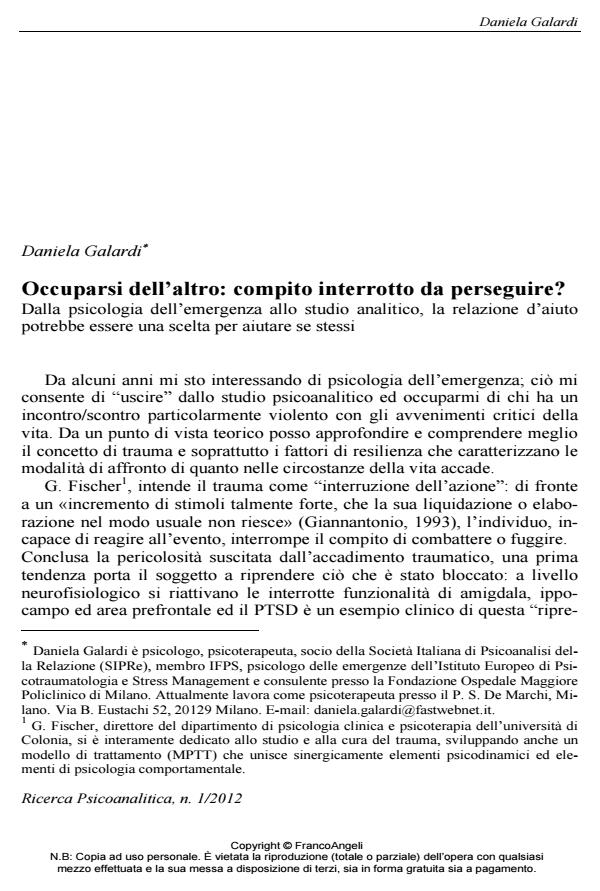Occuparsi dell'altro: compito interrotto da perseguire?
Journal title RICERCA PSICOANALITICA
Author/s Galardi Daniela
Publishing Year 2011 Issue 2012/1
Language Italian Pages 15 P. 71-85 File size 661 KB
DOI 10.3280/RPR2012-001005
DOI is like a bar code for intellectual property: to have more infomation
click here
Below, you can see the article first page
If you want to buy this article in PDF format, you can do it, following the instructions to buy download credits

FrancoAngeli is member of Publishers International Linking Association, Inc (PILA), a not-for-profit association which run the CrossRef service enabling links to and from online scholarly content.
From emergency psychology to the analytical room, the helping relationships as a choice to help oneself? The Author, a psychoanalyst with wide experience in emergency psychology, intends to investigate the deep motives of taking care of victims of catastrophic events. The repetition compulsion that develops into a "therapeutic compulsion" provides the therapist with a chance to "take care of herself" through this helping relationship. Starting from this assumption the Author discusses the risk of creating a collusion that could re-traumatize patients and block their development. A greater awareness of their unconscious functions can help analysts build with the patient/victim an interpersonal process characterized by sharing but also by a proper distance for reflecting on what is happening. It becomes then possible to "give word" in the sense of providing a new narrative that once shared becomes explicit and recognizable. This opportunity is an alternative to the repetition of past intrapsychic conflicts that reopen the process of developmental change and the realization of desire in its dimension of being in reality and planning the future.
Keywords: Emergency/critical situations, trauma, repetition compulsion, therapeutic compulsion
Galardi Daniela, Occuparsi dell'altro: compito interrotto da perseguire? in "RICERCA PSICOANALITICA" 1/2012, pp 71-85, DOI: 10.3280/RPR2012-001005